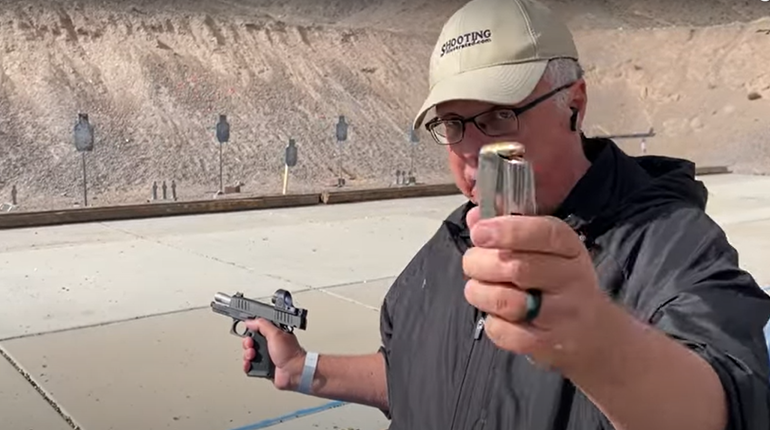
The pursuit of a lightweight, “small-caliber, high-velocity”(SCHV) military rifle led to the creation of the selective-fire AR-15 by the ArmaLite Division under the Fairchild Engine and Airplane Corp. in the late 1950s. The rifle was based on Eugene Stoner’s AR-10, introduced by ArmaLite in 1956.
Fairchild, facing financial trouble and assuming the AR-15 was unmarketable, sold the rights of the design to Colt’s Manufacturing Co. in 1959, with Fairchild receiving a small royalty in future sales. Early AR-15s were thus marked “Colt Armalite AR15 Cal. .223.”
In the famous July 4th watermelon shoot, Air Force Gen. Curtis LeMay found favor with the rifle and successfully pushed for its adoption in 1962. Orders from the Navy and Army soon followed.
Colt’s AR-15, designated the M16, became standard-issue by 1969, and Colt went on to produce semi-automatic-only versions of the AR-15 for police and civilians up through today.
ArmaLite went through a series of ownership and management changes in the decades following Colt’s acquisition. After the expiration of patents on Stoner’s gas system in 1977, other companies started manufacturing AR-style semi-automatics. Eagle Arms produced AR-15-style rifles in the late 1980s, and in 1994 Mark Westrom bought the company, purchased the ArmaLite trademark in 1995 and continued production of AR-style firearms under the ArmaLite, Inc., name. Today it offers a variety of AR-style semi-automatic rifles.
Although these AR-15 clones look like military M16s, including the controls and M4-style buttstock seen here, they generally do not fall under National Firearms Act regulations. They are incapable of full-automatic or “burst” fire, and most barrels are at least 16-inches long.
Fieldstrip and reassembly is the same for all gas-impingement AR-15 clones.
Fieldstrip Instructions
Depress the magazine release button (70), remove the magazine, pull the charging handle (25) to the rear and release it to visually inspect the chamber and ensure the rifle is unloaded.
Press the takedown pin (77) and pivot pin (61) from left to right, then pull them out as far as they go to separate the upper (106) and lower (62) receivers.
Pull the charging handle to the rear and pull the bolt carrier (31) group from the upper receiver (Fig. 1). Remove the charging handle by dropping it through the recesses in the upper receiver.
Depress the buffer retainer (81) to release the buffer (42) and buffer spring (41). Pull the buffer and spring from the receiver extension tube (43).
Pull the firing pin retaining pin (29) from the bolt carrier (Fig. 2). Up-end the bolt carrier and let the firing pin (26) fall from the bolt carrier. Push the bolt (33) into the carrier, then rotate the cam pin (30) 90 degrees (Fig. 3) and pull it from the carrier. Extract the bolt (Fig. 4).
Push the extractor pin (37) out of the bolt (Fig. 5), but be careful with the small extractor spring (35) and extractor spring insert (34). Some easily fall from the extractor (36) and can be lost. Reassembly is in reverse order.
Note: The accompanying diagram is a representation of typical AR-15-style rifle parts, as the shapes of some parts may vary slightly from model to model....






































